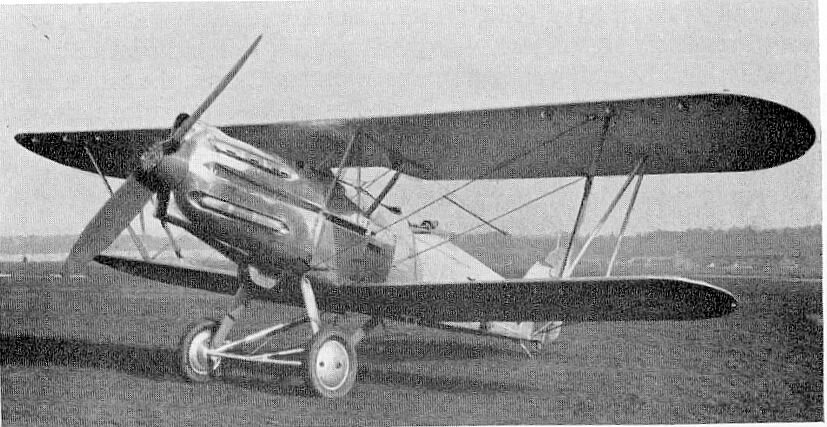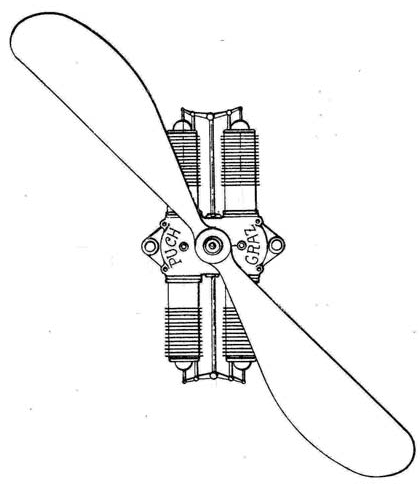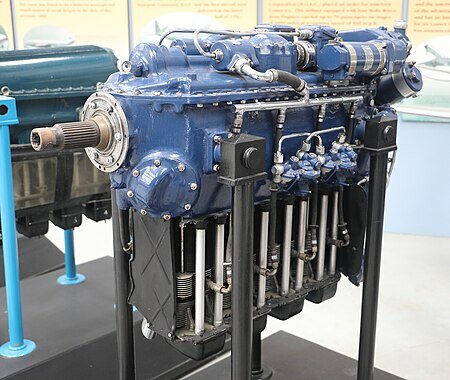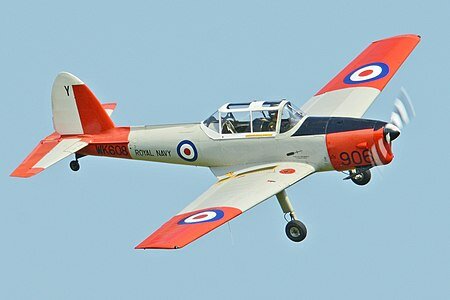You are using an out of date browser. It may not display this or other websites correctly.
You should upgrade or use an alternative browser.
You should upgrade or use an alternative browser.
Scott Kenny
ACCESS: USAP
- Joined
- 15 May 2023
- Messages
- 11,628
- Reaction score
- 14,321
I suspect it wouldn't be as powerful as a conventional flat engine, the oil building up in the lower bank would cause problems similar to radial engines. Lots of oil consumption, always leaking oil.Is there a box for engine that is vertically mounted? If not how would it perform
- Joined
- 11 March 2006
- Messages
- 8,625
- Reaction score
- 3,804
To me, the point here seems to be, that a boxer engine is mounted vertically. Not sure, if this was tried before, because the mass balance of the pistons may be different to a horizontally mounted eingine.
- Joined
- 6 November 2010
- Messages
- 5,262
- Reaction score
- 5,514
Napier Dagger 24-cylinder H-pattern engines were mounted with 2 cylinder banks pointing up, 2 down. If I've understood correctly, the Dagger was akin to two flat V-12s mounted side by side.
Hawker Hector:


 en.wikipedia.org
en.wikipedia.org
Hawker Hector:


Napier Dagger - Wikipedia
- Joined
- 6 November 2010
- Messages
- 5,262
- Reaction score
- 5,514
Napier solved the engine cooling for 16- and 24-cylinder engines, so what looks like a Puch 4-cylinder engine should not pose a problem cooling-wise. A 4-cylinder boxer should run smoothly, but 'should' and 'will' are different worlds.
Tonton-42
ACCESS: Secret
- Joined
- 10 May 2014
- Messages
- 367
- Reaction score
- 681
What is the problem ?I suspect it wouldn't be as powerful as a conventional flat engine, the oil building up in the lower bank would cause problems similar to radial engines. Lots of oil consumption, always leaking oil.

Renault 6Q Bengali : moteur aéronautique refroidi par air * TOUTES LES PYRÉNÉES · France, Espagne, Andorre
Renault 6Q Bengali Le Renault 6Q, également appelé Renault Bengali, était un moteur d’avion 6 cylindres en ligne inversé refroidi par air conçu et construit en France à partir de la fin des années 1920. Il a été appliqué sur des avions Caudron Simoun. Pays d’origine : France Année de...
 all-andorra.com
all-andorra.com
Scott Kenny
ACCESS: USAP
- Joined
- 15 May 2023
- Messages
- 11,628
- Reaction score
- 14,321
The bottom cylinders of a radial are a potential hydraulic lock on startup (that's why you see American bomber crews pulling their engines around by hand before startup in WW2, to make sure no cylinders are full enough to lock), and they tend to burn a lot of oil. Plus, the bottom cylinder's valve gear space tends to fill with oil and then leak.What is the problem ?

Renault 6Q Bengali : moteur aéronautique refroidi par air * TOUTES LES PYRÉNÉES · France, Espagne, Andorre
Renault 6Q Bengali Le Renault 6Q, également appelé Renault Bengali, était un moteur d’avion 6 cylindres en ligne inversé refroidi par air conçu et construit en France à partir de la fin des années 1920. Il a été appliqué sur des avions Caudron Simoun. Pays d’origine : France Année de...all-andorra.com
- Joined
- 19 July 2016
- Messages
- 4,275
- Reaction score
- 3,460
Leyland L60, also a verticaly opposed boxer engine.
Tonton-42
ACCESS: Secret
- Joined
- 10 May 2014
- Messages
- 367
- Reaction score
- 681
Certainly, but it has always been known that you have to shoot down the engines before starting, whatever vehicles in particular some tanks, it has nothing to do with the power they can develop ! Moreover, the most powerful mass-produced aircraft engines were radial air-cooled engines !The bottom cylinders of a radial are a potential hydraulic lock on startup (that's why you see American bomber crews pulling their engines around by hand before startup in WW2, to make sure no cylinders are full enough to lock), and they tend to burn a lot of oil. Plus, the bottom cylinder's valve gear space tends to fill with oil and then leak.

Pratt & Whitney R-4360 — Wikipédia
1635yankee
Recovering aeronautical engineer
- Joined
- 18 August 2020
- Messages
- 554
- Reaction score
- 766
A vertically-mounted opposed-piston engine. Not the same thing at all. Most OP engines are mounted with the pistons running vertically.Leyland L60, also a verticaly opposed boxer engine.
- Joined
- 19 July 2016
- Messages
- 4,275
- Reaction score
- 3,460
I think you mean rotated mount. I get what you are saying but not at the same time. Most boxer engines are laterally opposed rather than vertically opposed as in the VW types.A vertically-mounted opposed-piston engine. Not the same thing at all. Most OP engines are mounted with the pistons running vertically.
- Joined
- 19 July 2016
- Messages
- 4,275
- Reaction score
- 3,460
BTW, the L60 has pistons oerating vertically rather than from side to side. So, the same thing that you are talking about.
Scott Kenny
ACCESS: USAP
- Joined
- 15 May 2023
- Messages
- 11,628
- Reaction score
- 14,321
That's because the radials had at least double the displacement of the inlines. A Merlin is only 1650 cubic inches, the classic Allison is 1710.Certainly, but it has always been known that you have to shoot down the engines before starting, whatever vehicles in particular some tanks, it has nothing to do with the power they can develop ! Moreover, the most powerful mass-produced aircraft engines were radial air-cooled engines !

Pratt & Whitney R-4360 — Wikipédia
fr.wikipedia.org
Scott Kenny
ACCESS: USAP
- Joined
- 15 May 2023
- Messages
- 11,628
- Reaction score
- 14,321
Opposed-piston engines, where the crankshafts are at the top and bottom of the engine and the pistons meet in the middle, are a very different architecture to a flat engine like a VW or Porsche (or Subaru) with the crankshaft in the center.BTW, the L60 has pistons oerating vertically rather than from side to side. So, the same thing that you are talking about.
- Joined
- 19 July 2016
- Messages
- 4,275
- Reaction score
- 3,460
I was talking about the orientation of the engine when I mentioned the VW flat four or the flat six Porsche motors. The L60 does as you describe, vertically.
This is a H-engine with two crankshafts and the cam in the middle. The camshaft drives the prop.
I'm not sure, if it is a H engine with two two cylinder boxer engines or two 180 deg V-engines. With counterrotating crank shafts, full mass balancing would be possible even in the 180 deg version, but it would require heavy counterweights (100 % rot + 100 % oszillating).
I'm not sure, if it is a H engine with two two cylinder boxer engines or two 180 deg V-engines. With counterrotating crank shafts, full mass balancing would be possible even in the 180 deg version, but it would require heavy counterweights (100 % rot + 100 % oszillating).
Scott Kenny
ACCESS: USAP
- Joined
- 15 May 2023
- Messages
- 11,628
- Reaction score
- 14,321
Completely different architectures between opposed piston types (crankshafts at each end) and boxers (crankshaft in the middle), whether the two are mounted the same way or not.I was talking about the orientation of the engine when I mentioned the VW flat four or the flat six Porsche motors. The L60 does as you describe, vertically.
- Joined
- 19 July 2016
- Messages
- 4,275
- Reaction score
- 3,460
I am obviously missing ther football pitch, perhaps I should take a few days.
Sorry folks.
Maybe later.
Sorry folks.
Maybe later.
Similar threads
-
-
-
-
-
Simmering-Graz-Pauker Sla 16 (WW2 1945 German diesel tank engine)
- Started by JFC Fuller
- Replies: 6



